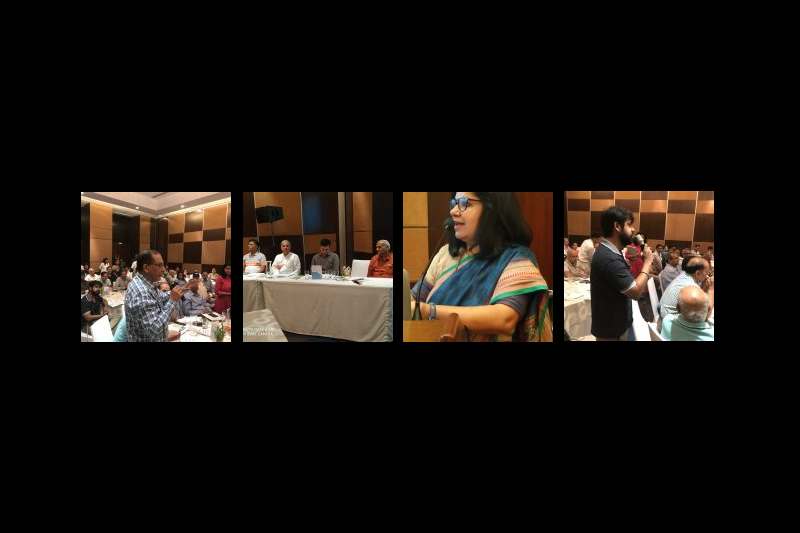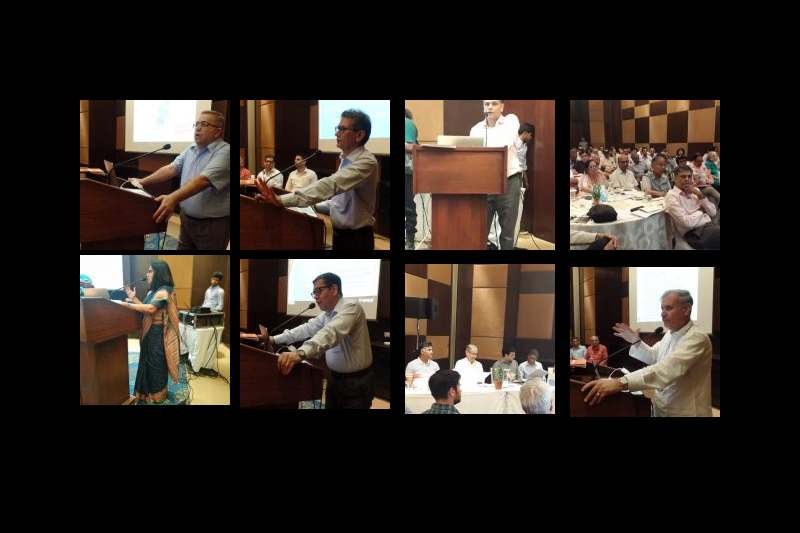Gurugram at 40 MW solar rooftop; must do 100 MW by 2022, With the view to make Gurugram a solar city, Gurgaon First along with Centre for Science and Environment organised a Solar Meet titled “Debunking Myths: Solar Rooftop for Residential Sector” at Hotel Anya, Gurugram. The workshop held on World Environment Day discussed the potential and challenges in solarisation of Gurugram as a means to usher less-expensive, pollution free solar power. It was attended by DHBVL officials, HAREDA officials, NGOs, RWA presidents and officials, solar manufacturers as well as solar EPC players.
Gurugram has a vision – that of being a ‘solar pioneer’, and a modern, truly ‘smart’ city. But it will never be able to realize this vision unless it ensures that its residential sector – its homes – adopt solar power. Solar rooftop (SRT) could be an excellent non-polluting, cost-effective alternative to replace the smoke-spewing diesel generators currently in use in most residential societies in Gurugram.
Speaking at the meeting, MoS of the Ministry of Statistics and Programme Implementation, and Minister of Planning said “The politicians, administrators, and citizens must work together to develop Gurugram into model solar city” He further added that he would “use the clout from being elected to push for solar energy, in the hopes that it benefits the citizens who elected him”.
Deputy Commissioner of Gurugram Amit Khatri said: “Adoption of solar is already underway. There are a lot of examples within the city to look forward and emulate.
Other speakers were Mr Amit Khatri, District Commissioner, Gurugram, Mr Rameshwar Singh, Project Officer, New and Renewable Energy Department, Haryana, Priyavrat Bhati, CSE, Mr Sandip Ghosh, EVP-Solar, Liv Guard and Vineet Bagga, President, Wellington RWA. All attendees gave their suggestions to create a viable action plan for future growth.
Ms Shubhra Puri, Founder, Gurgaon First have an overview of solar explaining solar cost basics, financial models, national state and Gurugram scenario as well as described some of concerns for switching to solar. Ms Puri said, “Gurugram could easily be a solar city with progressive mindset of residents, presence of large buildings and a progressive state solar policy. Let us work towards making it a 100 MW solar rooftop city by 2022”.
Haryana has a very progressive policy on solar and Gurugram in particular has a vast potential for solar growth. The workshop was meant to identify the key bottlenecks and facilitate action. It is also meant to educate and instil confidence among all stakeholders and identify the missing links and enable on-the-ground action. Gurugram is a city with numerous residential societies and high-rises that promise 24/7 steady power supply – all with diesel generator (DG) support. Their impact on air quality has been severe – these DG sets are choking the city with their noxious fumes. CSE’s assessment of the situation shows levels of PM2.5 and PM10 increase by two and three times, respectively, immediately after a DG set is operated. These levels are several notches higher than the safe limits for residents. Though solar by itself does not offer an alternative for DG sets during power cuts, it does minimize the use of the latter for regular, every-day power supply.”
India plans to install 100 gigawatt (GW) of solar energy capacity by 2022 – 40 per cent of this is expected to come from solar rooftop (SRT). But the picture on the ground is not sunny at all. Till December 2018, the country had managed to install a meagre 1.8 GW of SRT.
Gurugram, till March 2019, and as per estimates from HAREDA, had only 40 MW worth of installed capacity up from 25 MW last year. Gurugram does offer a few examples of successful and encouraging installations of SRT. Wellington Estate RWA in DLF-5 has installed a 350kWp SRT plant, the largest in India. According to Wellington RWA president Vineet Bagga, the plant has helped the complex reduce its annual power bill by Rs 33 lacs. Participants at the meeting who are producing and consuming SRT-based power, pointed out that the two key bottlenecks were delayed disbursal of subsidies and late installation of bi-directional net meters.


